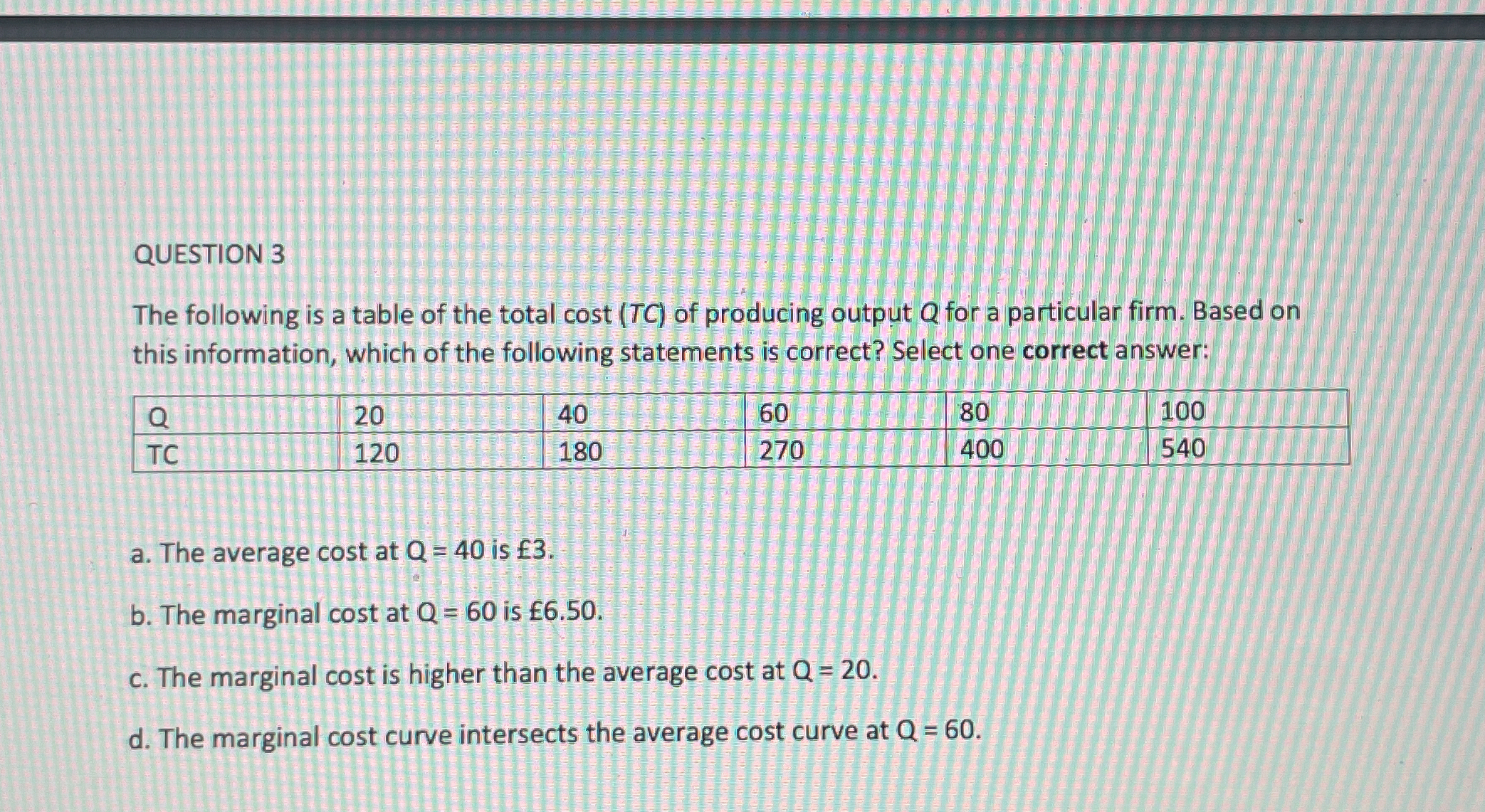The following is a table of the total cost (TC) of producing output Q for a particular firm. Based on this information, which of the following statements is correct? Select one cor... The following is a table of the total cost (TC) of producing output Q for a particular firm. Based on this information, which of the following statements is correct? Select one correct answer: a. The average cost at Q = 40 is £3. b. The marginal cost at Q = 60 is £6.50. c. The marginal cost is higher than the average cost at Q = 20. d. The marginal cost curve intersects the average cost curve at Q = 60.

Understand the Problem
The question involves interpreting data from a total cost (TC) table for a firm to identify which of the provided statements about average cost and marginal cost is correct. It requires calculating average cost and marginal cost from the given total costs and quantities.
Answer
c. The marginal cost is higher than the average cost at Q = 20.
Answer for screen readers
c. The marginal cost is higher than the average cost at Q = 20.
Steps to Solve
-
Calculate Average Cost (AC) at Q = 40
To find the average cost, use the formula:
$$ AC = \frac{TC}{Q} $$
For Q = 40, TC = 180:
$$ AC = \frac{180}{40} = 4.5 $$
So, AC at Q = 40 is £4.5, not £3. -
Calculate Marginal Cost (MC) at Q = 60
To find the marginal cost, use the formula:
$$ MC = TC(Q) - TC(Q - 1) $$
For Q = 60 and Q = 40:
$$ MC = 270 - 180 = 90 $$
The marginal cost at Q = 60 is £90, not £6.50. -
Compare Marginal Cost and Average Cost at Q = 20
For Q = 20, TC = 120:
$$ AC = \frac{120}{20} = 6 $$
Calculate MC between Q = 20 and Q = 40:
$$ MC = 180 - 120 = 60 $$
Since MC (£60) is higher than AC (£6), this statement is true. -
Determine the intersection of MC and AC
The marginal cost intersects average cost where MC = AC. We have:
- For Q = 40: AC = £4.5, MC calculation is needed for ranges (not yet calculated for other points). However, we already see that AC is decreasing and MC significantly higher at least until Q=60.
Since we saw MC > AC at Q = 20, it suggests that they will likely intersect at a higher Q value.
c. The marginal cost is higher than the average cost at Q = 20.
More Information
Marginal cost measures the cost of producing one more unit, while average cost gives the total cost per unit. Understanding their relationship is crucial in determining optimal production levels.
Tips
- Confusing average cost with marginal cost. Average cost is total cost divided by quantity, while marginal cost is the change in total cost for a change in output.
- Miscalculating the marginal cost by not using the correct TC values for the specific quantities.
AI-generated content may contain errors. Please verify critical information